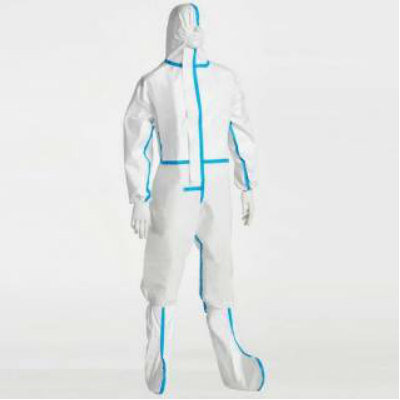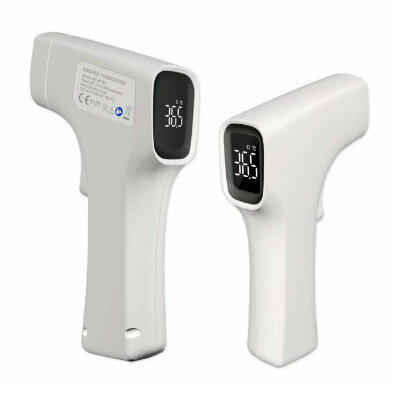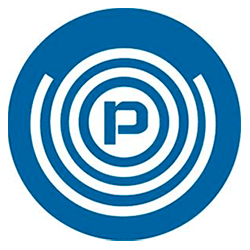Robotic Arm Helps Rehabilitate Stroke Patients
|
By HospiMedica International staff writers Posted on 15 Nov 2018 |

Image: A rehabilitation device combines an exo-skeleton and soft robotics (Photo courtesy of PolyU).
A new robotic arm enables stroke patients to independently engage in intensive and effective self-help rehabilitation exercise once discharged from hospital.
The mobile exo-neuro-musculo-skeleton represents an innovative integration of exo-skeleton materials, soft robotics, and neuro-muscular electrical stimulation (NMES) technologies. The working principle of both exo-skeleton and soft robotic designs is to provide external mechanical forces that are driven by voluntary muscle signals that assist the patient's desired joint movement. The robotic arm, developed at Hong Kong Polytechnic University (PolyU) thus includes components for wrist/hand, elbow, and fingers, which can be worn separately or together for different functional training needs.
The robotic arm, which is light in weight, compact in size, fast in response, and with minimal power demands, is suitable for both indoor and outdoor environments. Once electromyography signals sent to the muscles are detected, the arm responds by applying NMES to help contract them, as well as exerting external mechanical forces to assist the desired voluntary movement. The combination of increased muscle strength triggered by NMES and external mechanical forces is 40% more effective for stroke rehabilitation than applying external mechanical forces alone.
Features include a lightweight design (up to 300g for wearable upper limb components, which are fit for different functional training needs), a low power demand (12V rechargeable battery supply for 4-hour continuous use), and a sportswear design that uses washable fabric with ultraviolet (UV) protection and good ventilation, . A value-added feature is a mobile app that allows users to control their own training. The app also records real-time training data for better monitoring of the rehabilitation progress by both healthcare practitioners and the patients themselves.
“We are confident that with our mobile exo-neuro-musculo-skeleton, stroke patients can conduct rehabilitation training anytime and anywhere, turning the training into part of their daily activities,” said Hu Xiao-ling, PhD, and colleagues of the PolyU department of biomedical engineering (BME). “We hope such flexible self-help training can well supplement traditional outpatient rehabilitation services, helping stroke patients achieve a much better rehabilitation progress.”
Intensive, repeated, and long-term rehabilitation training are critical for enhancing the physical mobility of stroke patients, helping to alleviate post-stroke symptoms such as disability. But the vast demand for outpatient rehabilitation services for stroke patients results in long queues forming for every available slot, and patients do not receive timely and routine rehabilitation exercises. Stroke patients also find it challenging to travel from home to outpatient clinics.
Related Links:
Hong Kong Polytechnic University
The mobile exo-neuro-musculo-skeleton represents an innovative integration of exo-skeleton materials, soft robotics, and neuro-muscular electrical stimulation (NMES) technologies. The working principle of both exo-skeleton and soft robotic designs is to provide external mechanical forces that are driven by voluntary muscle signals that assist the patient's desired joint movement. The robotic arm, developed at Hong Kong Polytechnic University (PolyU) thus includes components for wrist/hand, elbow, and fingers, which can be worn separately or together for different functional training needs.
The robotic arm, which is light in weight, compact in size, fast in response, and with minimal power demands, is suitable for both indoor and outdoor environments. Once electromyography signals sent to the muscles are detected, the arm responds by applying NMES to help contract them, as well as exerting external mechanical forces to assist the desired voluntary movement. The combination of increased muscle strength triggered by NMES and external mechanical forces is 40% more effective for stroke rehabilitation than applying external mechanical forces alone.
Features include a lightweight design (up to 300g for wearable upper limb components, which are fit for different functional training needs), a low power demand (12V rechargeable battery supply for 4-hour continuous use), and a sportswear design that uses washable fabric with ultraviolet (UV) protection and good ventilation, . A value-added feature is a mobile app that allows users to control their own training. The app also records real-time training data for better monitoring of the rehabilitation progress by both healthcare practitioners and the patients themselves.
“We are confident that with our mobile exo-neuro-musculo-skeleton, stroke patients can conduct rehabilitation training anytime and anywhere, turning the training into part of their daily activities,” said Hu Xiao-ling, PhD, and colleagues of the PolyU department of biomedical engineering (BME). “We hope such flexible self-help training can well supplement traditional outpatient rehabilitation services, helping stroke patients achieve a much better rehabilitation progress.”
Intensive, repeated, and long-term rehabilitation training are critical for enhancing the physical mobility of stroke patients, helping to alleviate post-stroke symptoms such as disability. But the vast demand for outpatient rehabilitation services for stroke patients results in long queues forming for every available slot, and patients do not receive timely and routine rehabilitation exercises. Stroke patients also find it challenging to travel from home to outpatient clinics.
Related Links:
Hong Kong Polytechnic University
Latest Patient Care News
- Surgical Capacity Optimization Solution Helps Hospitals Boost OR Utilization

- Game-Changing Innovation in Surgical Instrument Sterilization Significantly Improves OR Throughput
- Next Gen ICU Bed to Help Address Complex Critical Care Needs
- Groundbreaking AI-Powered UV-C Disinfection Technology Redefines Infection Control Landscape
- Clean Hospitals Can Reduce Antibiotic Resistance, Save Lives
- Smart Hospital Beds Improve Accuracy of Medical Diagnosis
- New Fast Endoscope Drying System Improves Productivity and Traceability
- World’s First Automated Endoscope Cleaner Fights Antimicrobial Resistance
- Portable High-Capacity Digital Stretcher Scales Provide Precision Weighing for Patients in ER
- Portable Clinical Scale with Remote Indicator Allows for Flexible Patient Weighing Use
- Innovative and Highly Customizable Medical Carts Offer Unlimited Configuration Possibilities
- Biomolecular Wound Healing Film Adheres to Sensitive Tissue and Releases Active Ingredients
- Wearable Health Tech Could Measure Gases Released From Skin to Monitor Metabolic Diseases
- Wearable Cardioverter Defibrillator System Protects Patients at Risk of Sudden Cardiac Arrest
- World's First AI-Ready Infrasound Stethoscope Listens to Bodily Sounds Not Audible to Human Ear
- POC Diagnostic Platform Offers Handheld, Instrument-Free PCR Testing for STIs
Channels
Artificial Intelligence
view channel
AI-Powered Algorithm to Revolutionize Detection of Atrial Fibrillation
Atrial fibrillation (AFib), a condition characterized by an irregular and often rapid heart rate, is linked to increased risks of stroke and heart failure. This is because the irregular heartbeat in AFib... Read more
AI Diagnostic Tool Accurately Detects Valvular Disorders Often Missed by Doctors
Doctors generally use stethoscopes to listen for the characteristic lub-dub sounds made by heart valves opening and closing. They also listen for less prominent sounds that indicate problems with these valves.... Read moreCritical Care
view channel
Deep-Learning Model Predicts Arrhythmia 30 Minutes before Onset
Atrial fibrillation, the most common type of cardiac arrhythmia worldwide, affected approximately 59 million people in 2019. Characterized by an irregular and often rapid heart rate, atrial fibrillation... Read more
Breakthrough Technology Combines Detection and Treatment of Nerve-Related Disorders in Single Procedure
The peripheral nervous system (PNS) serves as the communication network that links the brain and spinal cord to every other part of the body. It consists of two parts: the somatic nervous system, which... Read moreSurgical Techniques
view channel
Hydrogel-Based Miniaturized Electric Generators to Power Biomedical Devices
The development of engineered devices that can harvest and convert the mechanical motion of the human body into electricity is essential for powering bioelectronic devices. This mechanoelectrical energy... Read moreWearable Technology Monitors and Analyzes Surgeons' Posture during Long Surgical Procedures
The physical strain associated with the static postures maintained by neurosurgeons during long operations can lead to fatigue and musculoskeletal problems. An objective assessment of surgical ergonomics... Read more.jpg)
Custom 3D-Printed Orthopedic Implants Transform Joint Replacement Surgery
The evolving field of 3D printing is revolutionizing orthopedics, especially for individuals requiring joint replacement surgeries where traditional implants fail to provide a solution. Although most people... Read more
Cutting-Edge Imaging Platform Detects Residual Breast Cancer Missed During Lumpectomy Surgery
Breast cancer is becoming increasingly common, with statistics indicating that 1 in 8 women will develop the disease in their lifetime. Lumpectomy remains the predominant surgical intervention for treating... Read moreHealth IT
view channel
Machine Learning Model Improves Mortality Risk Prediction for Cardiac Surgery Patients
Machine learning algorithms have been deployed to create predictive models in various medical fields, with some demonstrating improved outcomes compared to their standard-of-care counterparts.... Read more
Strategic Collaboration to Develop and Integrate Generative AI into Healthcare
Top industry experts have underscored the immediate requirement for healthcare systems and hospitals to respond to severe cost and margin pressures. Close to half of U.S. hospitals ended 2022 in the red... Read more
AI-Enabled Operating Rooms Solution Helps Hospitals Maximize Utilization and Unlock Capacity
For healthcare organizations, optimizing operating room (OR) utilization during prime time hours is a complex challenge. Surgeons and clinics face difficulties in finding available slots for booking cases,... Read more
AI Predicts Pancreatic Cancer Three Years before Diagnosis from Patients’ Medical Records
Screening for common cancers like breast, cervix, and prostate cancer relies on relatively simple and highly effective techniques, such as mammograms, Pap smears, and blood tests. These methods have revolutionized... Read morePoint of Care
view channel
Critical Bleeding Management System to Help Hospitals Further Standardize Viscoelastic Testing
Surgical procedures are often accompanied by significant blood loss and the subsequent high likelihood of the need for allogeneic blood transfusions. These transfusions, while critical, are linked to various... Read more
Point of Care HIV Test Enables Early Infection Diagnosis for Infants
Early diagnosis and initiation of treatment are crucial for the survival of infants infected with HIV (human immunodeficiency virus). Without treatment, approximately 50% of infants who acquire HIV during... Read more
Whole Blood Rapid Test Aids Assessment of Concussion at Patient's Bedside
In the United States annually, approximately five million individuals seek emergency department care for traumatic brain injuries (TBIs), yet over half of those suspecting a concussion may never get it checked.... Read more
New Generation Glucose Hospital Meter System Ensures Accurate, Interference-Free and Safe Use
A new generation glucose hospital meter system now comes with several features that make hospital glucose testing easier and more secure while continuing to offer accuracy, freedom from interference, and... Read moreBusiness
view channel
Johnson & Johnson Acquires Cardiovascular Medical Device Company Shockwave Medical
Johnson & Johnson (New Brunswick, N.J., USA) and Shockwave Medical (Santa Clara, CA, USA) have entered into a definitive agreement under which Johnson & Johnson will acquire all of Shockwave’s... Read more
















